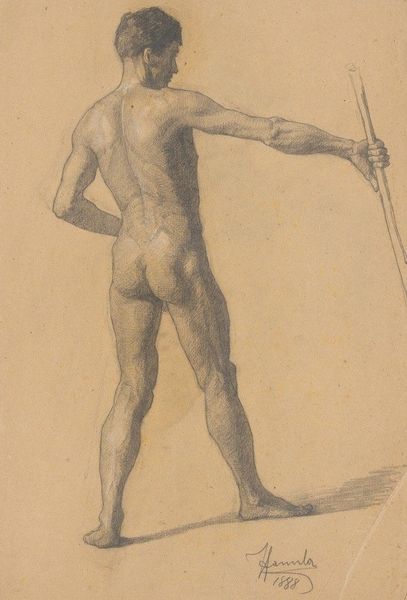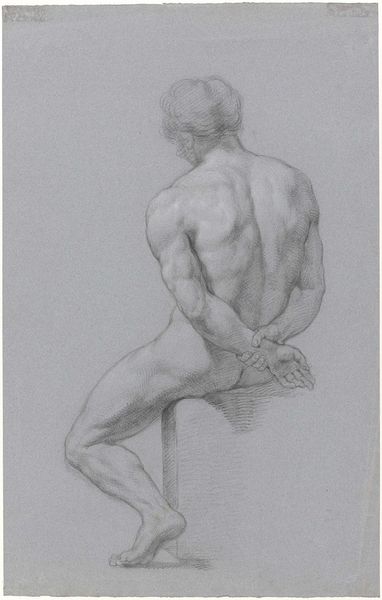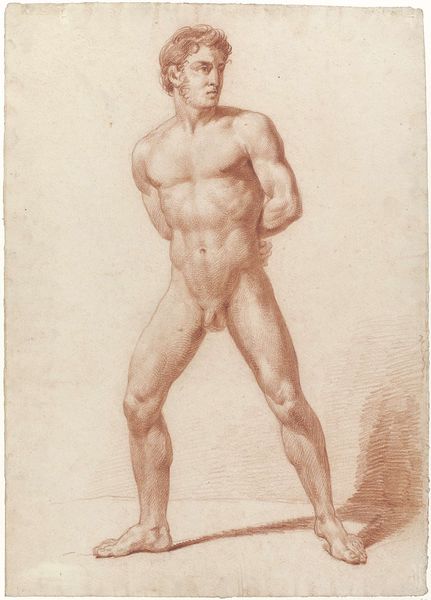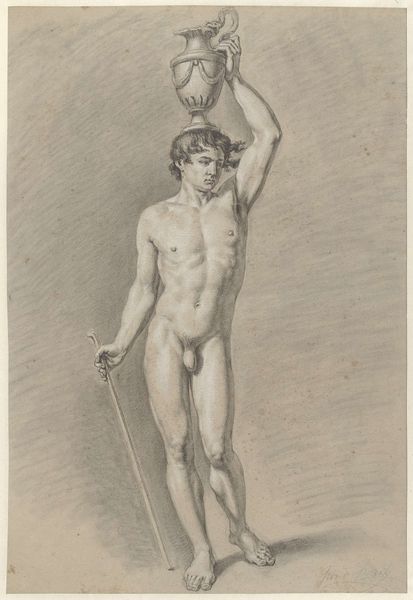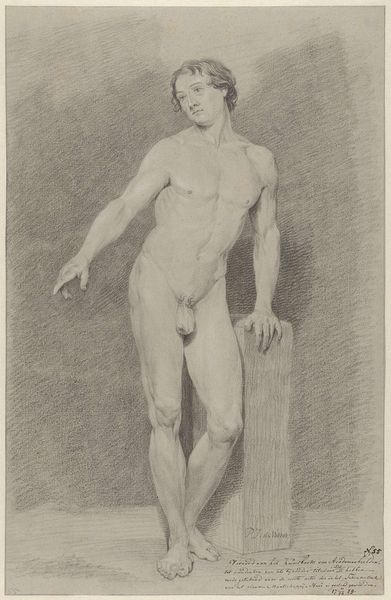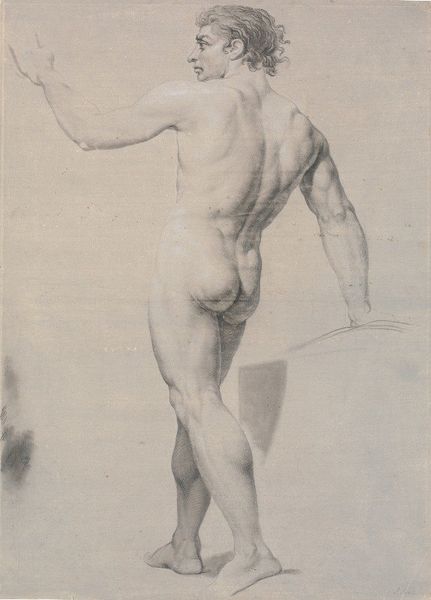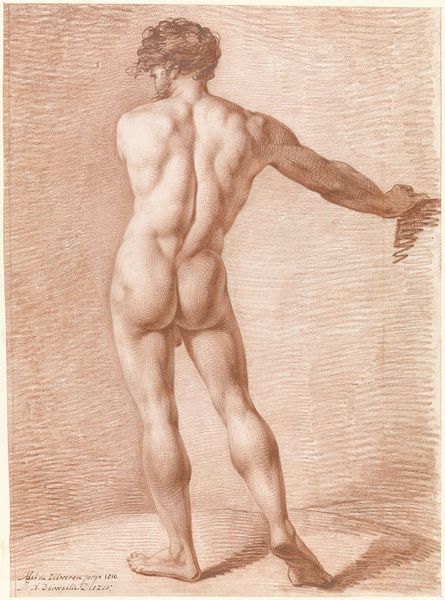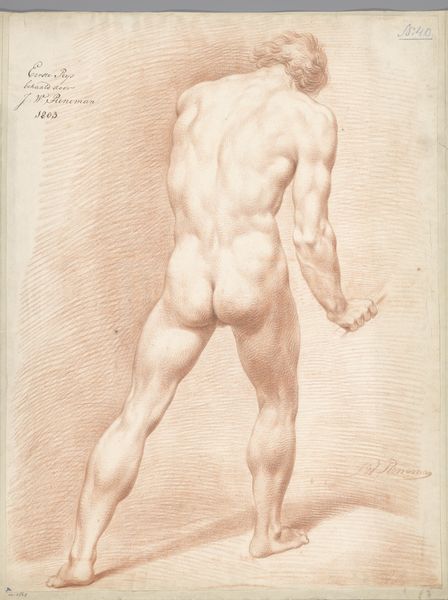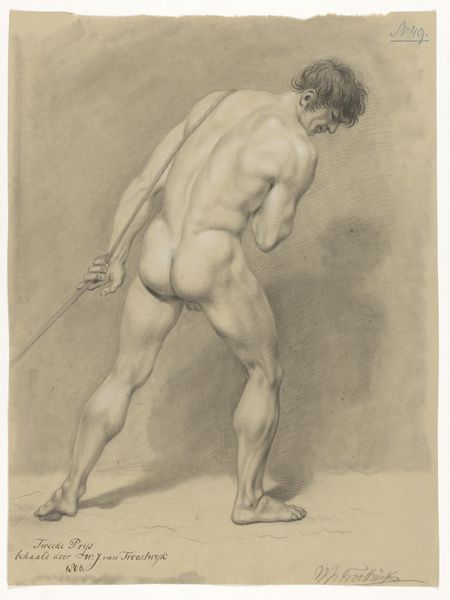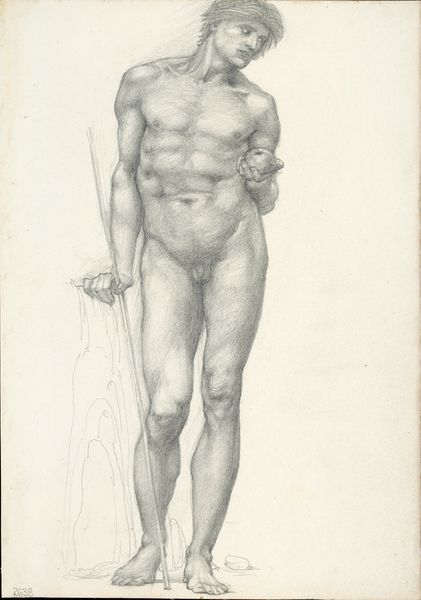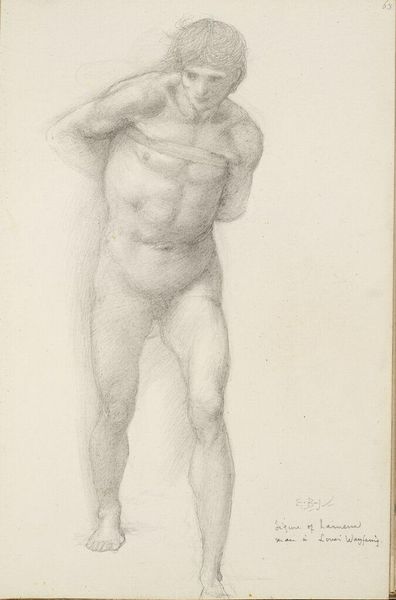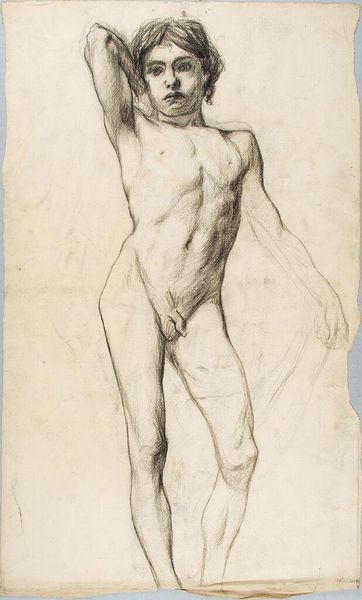
drawing, pencil
#
drawing
#
figuration
#
pencil drawing
#
pencil
#
academic-art
#
nude
#
realism
Dimensions: height 545 mm, width 374 mm
Copyright: Rijks Museum: Open Domain
Curator: Here we have "Standing Male Nude, Seen from the Back," a pencil drawing created by Jan Willem Pieneman sometime between 1789 and 1853. It's part of the Rijksmuseum's collection. Editor: First impression? Stark. A study in tension. All that careful shading, mapping the muscles, it’s almost architectural in its precision, yet still feels… vulnerable? Curator: Absolutely. Consider the context. Academic art demanded this kind of anatomical study. Artists were trained to depict the ideal form, often drawing inspiration from classical sculpture. It reflects a cultural emphasis on reason and order. Editor: Order, maybe, but look closer. The pose is slightly off-balance. The gaze... we can't see his eyes, but his posture is averted, as if hiding. It makes me wonder, what’s he thinking? What's he holding in his left hand, a staff of some sort? There's a silent drama, isn’t there? Curator: You’ve picked up on some important subtleties. Pieneman, while working within academic conventions, still manages to hint at an inner life. The shading suggests both strength and a certain fragility. We need to remember art education relied heavily on these nude sketches. The museums amassed huge collections used as tools. Editor: Right. And tools can be wielded in many ways. Even within rigid frameworks, artists find room for expression. Is he Atlas holding up the world? A tired Hercules resting after his labors? The lack of a narrative invites us to project our own stories. I love that ambiguity. Curator: The absence of details—the lack of identifying features—also invites universal identification. It becomes less about a specific individual and more about the human form itself. I'm intrigued with his potential artistic intention for it being seen by the public versus educational use within academic spheres. Editor: It’s funny, isn't it? This drawing, meant to dissect the human body, ends up revealing something far more profound about the human condition. Even if the process may have taken place away from any galleries for many years! Curator: It underscores the complexity inherent in art and artistic studies. Works may be created in one era, and yet communicate many new insights within a shifting present, Editor: True, makes you think about the past versus a present appreciation in terms of human development. We all get stronger together! Thanks!
Comments
No comments
Be the first to comment and join the conversation on the ultimate creative platform.
